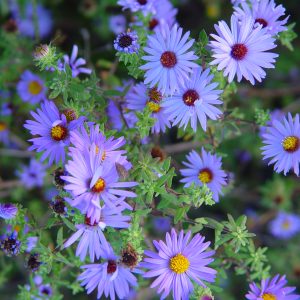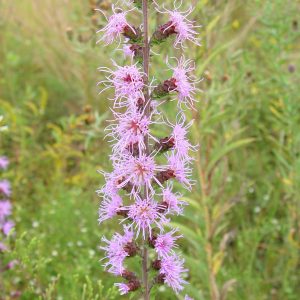Common Boneset
Eupatorium perfoliatum
Common in moist prairies; Native Americans considered it a cure for many aches, pains, and illnesses.
$3.00 – $354.00
For quantity discount pricing, request a quote.
Description
Eupatorium perfoliatum, commonly called American Boneset or common Boneset, is a native perennial forb (wildflower) that typically occurs in wet soils in low woods, thickets, stream banks, meadows and prairies throughout the southeastern United States. Flat-topped clusters of small, fluffy, white flowers appear above the foliage in late summer to fall.
Wildlife notes
The nectar or pollen of the flowers attracts many kinds of insects, including bees, flies, wasps, butterflies, and beetles. In particular, many kinds of unusual flies and wasps are attracted to the flowers because of the accessibility of the nectar. The caterpillars of various moth species are known to feed on various parts of Common Boneset, including Haploa clymene (Clymene Moth), Phragmatobia lineata (Lined Ruby Tiger Moth), Papaipema cataphracta (Burdock Borer Moth), Schinia trifascia (Three-Lined Flower Moth), Chlorochlamys chloroleucaria (Blackberry Looper Moth), and Semiothisa continuata (Geometrid Moth sp.). The small seeds appear to be of little interest to birds and other fauna, although they are occasionally eaten by the Swamp Sparrow. Mammalian herbivores display little interest in Common Boneset as a food source because of the bitterness of the foliage.
Forage notes
Boneset is not palatable as a food source for livestock because of the bitterness of the foliage.
Landscaping notes
Easily grown in average, medium to wet soils in full sun to part shade. Does well in both sandy and clay soils. Needs constant moisture. May flop and requires staking in rich, fertile soils. Good size and late bloom for borders, native plant gardens, wildflower gardens, cottage gardens, woodland gardens, rain gardens, or banks of ponds or water gardens. This plant can withstand flooded conditions for short periods of time, but it is not really aquatic.
Restoration notes
Habitats include openings in floodplain forests, poorly drained areas of black soil prairies, and various kinds of wetlands, including marshes, bogs, fens, seeps, edges of rivers, and sand flats. Generally, it doesn’t stray far from wetland areas of one kind or another.
Additional information
| Weight | N/A |
|---|---|
| Light | Full Sun |
| Soils | Moist |
| Height Range | 25 – 48" |
| Height | 36"-42" |
| Bloom Month | Aug, Sep |
| Color Family | White |
| Color | White |
| Specialty Uses | Medicinal, Tea |
| Cattle Palatability | Poor |
| Life Cycle | Perennial |

